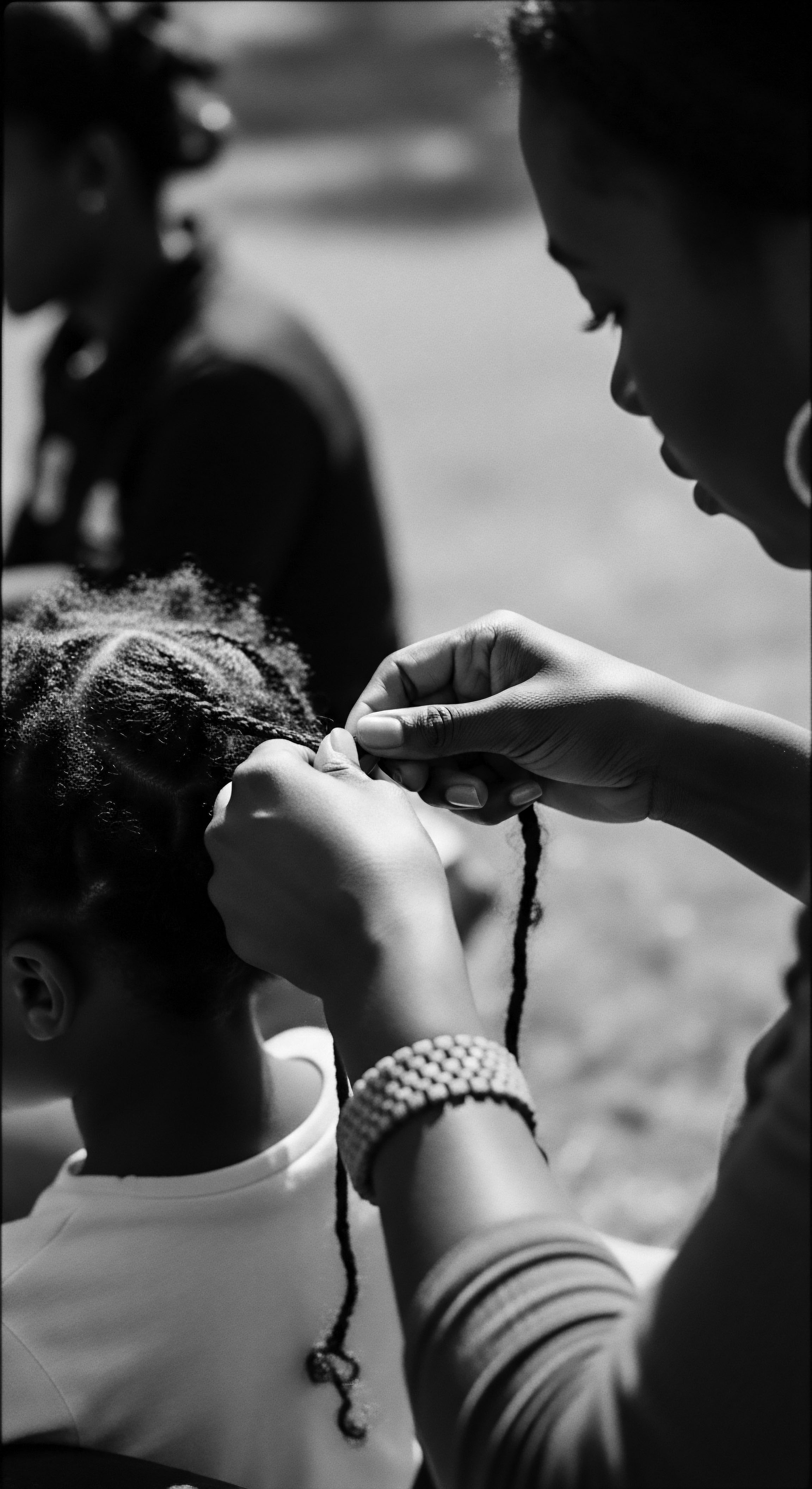
Fundamentals
The very notion of Genetic Hair Loss, at its simplest, speaks to the inherited patterns of hair thinning or absence passed down through ancestral lines. It is an explanation, a designation for the biological predisposition that dictates how hair follicles respond to various internal signals over time. For those with textured hair, particularly within Black and mixed-race communities, this phenomenon carries a distinct weight, a different kind of meaning, woven into the very fabric of identity and collective memory. It is not merely a biological occurrence but a thread in the larger narrative of heritage.
At its core, Genetic Hair Loss involves specific genes influencing the life cycle of hair follicles, leading to their gradual miniaturization or complete cessation of hair production. This inherited tendency means that the journey of one’s hair, including its potential for thinning, often mirrors the experiences of forebears. The patterns observed, whether a receding hairline or a diffuse thinning across the crown, are echoes of a biological legacy.
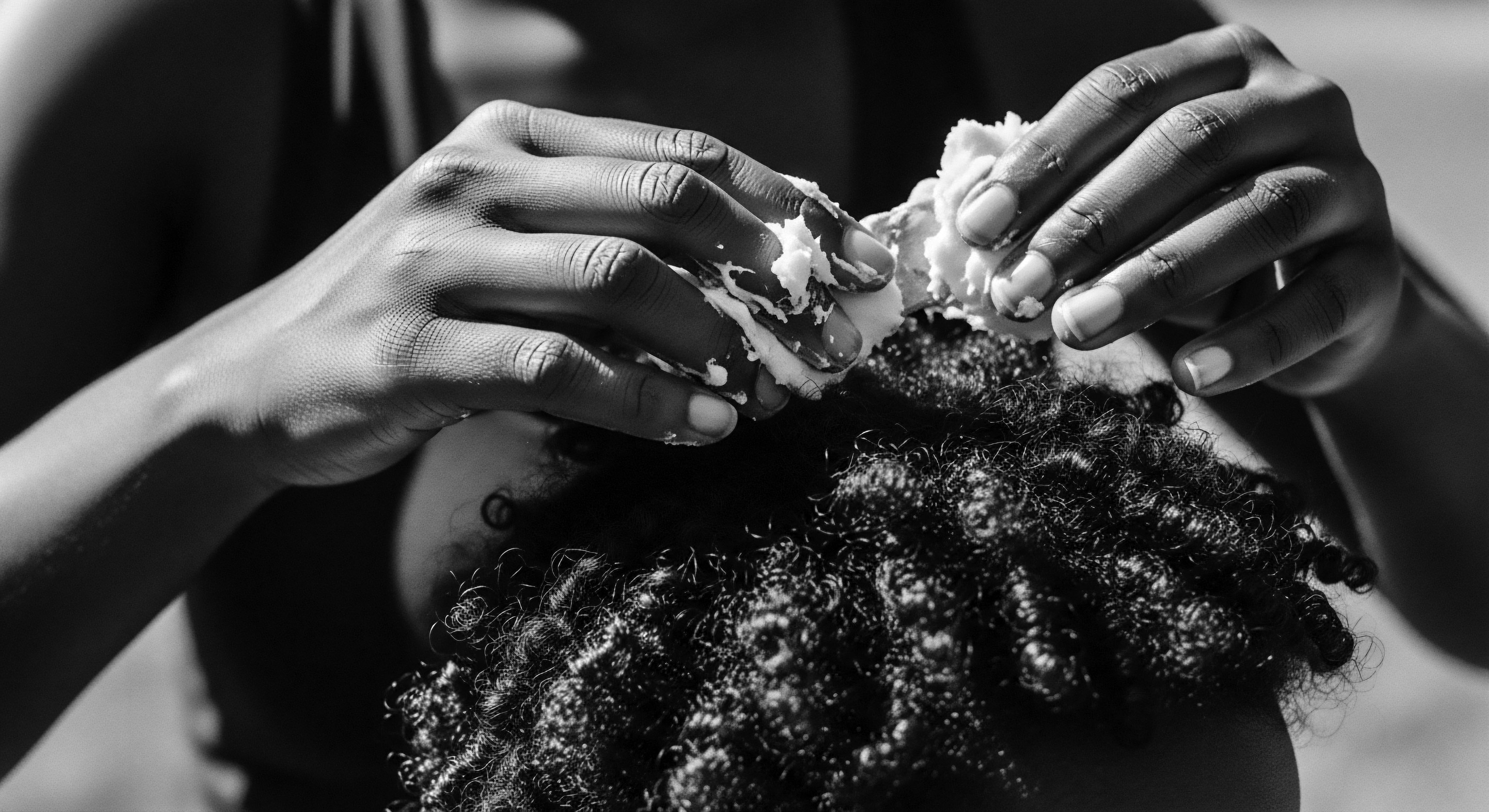
The Inherited Whisper of Strands
Consider the intricate dance of inheritance ❉ traits, stories, and even vulnerabilities are passed from one generation to the next. Genetic Hair Loss is one such whisper from the past, a blueprint held within our very cells. It is the reason why some individuals may notice hair thinning patterns that resemble those of a grandparent or an aunt. This inherited sensitivity dictates how hair follicles respond to hormones, particularly androgens, leading to a shortened growth phase and progressively finer, shorter strands.
For individuals with textured hair, this biological reality is often compounded by a history of hair practices and societal pressures that have, at times, exacerbated underlying predispositions. The strength and resilience of textured hair are legendary, yet its unique coiled structure can also make it more susceptible to certain forms of stress. Understanding this elemental biology, this inherent design, becomes a first step toward nurturing and honoring the hair’s ancestral story.

Intermediate
Moving beyond the foundational understanding, Genetic Hair Loss reveals itself as a more intricate biological and cultural phenomenon, particularly when viewed through the lens of textured hair heritage. It is not a singular condition but rather a spectrum of inherited predispositions that influence the hair follicle’s journey through its growth cycles. The significance of this genetic component deepens when considering the unique morphology and historical care practices associated with Black and mixed-race hair.
The primary expression of Genetic Hair Loss often manifests as androgenetic alopecia, colloquially known as male or female pattern baldness. This condition is characterized by a progressive reduction in hair follicle size, a process known as miniaturization, ultimately leading to thinner, shorter hairs, or no hair at all. The underlying mechanism involves a genetic sensitivity to dihydrotestosterone (DHT), a hormone that, in predisposed individuals, signals hair follicles to shrink.
While this process is universal, its presentation and the contributing genetic variants can differ across populations. For instance, studies indicate that genetic predictions of baldness developed from European populations may not transfer well to sub-Saharan African populations, underscoring the need for culturally relevant research.
The journey of understanding Genetic Hair Loss for textured hair is a path that entwines ancestral biological predispositions with the lived experiences of cultural hair practices.

Androgenetic Alopecia ❉ A Familial Echo
Androgenetic alopecia, the most prevalent form of Genetic Hair Loss, is profoundly influenced by heredity, drawing its blueprint from both sides of one’s family tree. This inherited susceptibility dictates how hair follicles respond to specific hormonal signals, particularly dihydrotestosterone (DHT). For those with a familial history of thinning hair, this means a predisposition to follicles gradually diminishing in size, producing finer, shorter strands, and eventually ceasing hair production altogether.
In Black men, this often presents as a receding hairline at the temples or thinning at the crown, though sometimes with a more diffuse reduction in density that can be partially masked by the hair’s coiled nature. For Black women, androgenetic alopecia can manifest as diffuse thinning, often starting around the central parting.
This genetic sensitivity is not merely a biological fact; it carries with it generations of stories, of remedies passed down, and of collective adaptation. Ancestral knowledge, steeped in observations of hair health within families, often holds clues that modern science is only beginning to unravel. The conversation around Genetic Hair Loss in textured hair communities must always honor this continuum, recognizing the wisdom embedded in historical practices alongside contemporary scientific understanding.
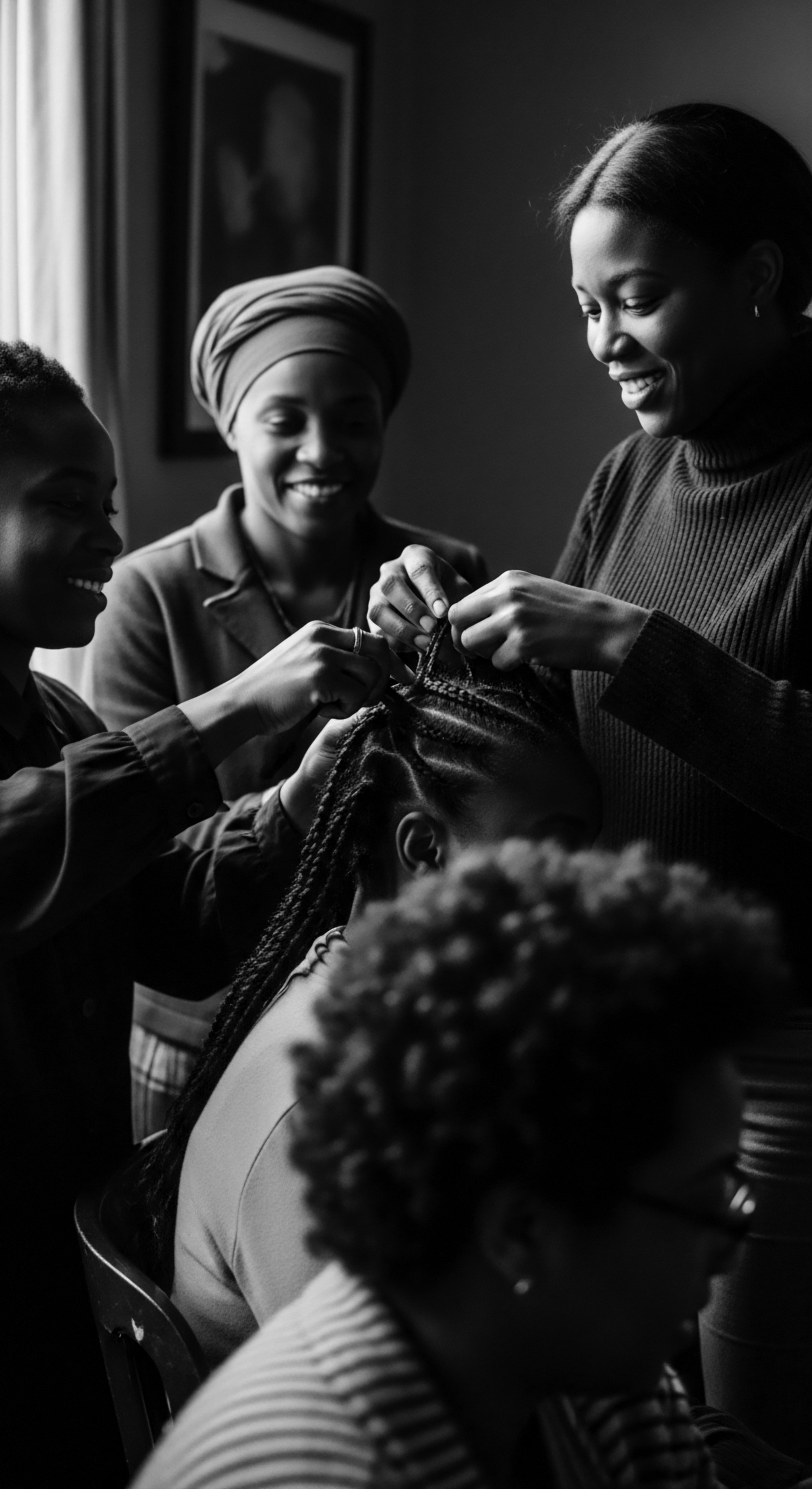
Central Centrifugal Cicatricial Alopecia (CCCA) ❉ A Scarring Legacy
A particularly poignant form of hair loss with a strong genetic component, especially within communities of African descent, is Central Centrifugal Cicatricial Alopecia (CCCA). This condition, historically referred to as “hot comb alopecia” or “follicular degeneration syndrome,” is a primary scarring alopecia that causes permanent hair loss. It typically begins at the crown of the scalp and radiates outward in a circular pattern, destroying hair follicles and replacing them with scar tissue.
While CCCA was once largely attributed solely to damaging hair care practices such as excessive heat, chemical relaxers, and tight hairstyles, emerging research points to a significant genetic predisposition. A groundbreaking study led by Professor Ncoza Dlova and her collaborators identified a mutation in the PADI3 Gene as a major cause of CCCA in women of African descent. This gene plays a critical role in the proper formation of the hair shaft. This discovery underscores that while certain styling practices may act as triggers or worsen the condition, a deep-seated genetic vulnerability is often at play.
The prevalence of CCCA among women of African descent, ranging from 2.7% to 5.6%, makes it one of the most common causes of primary scarring alopecia in this demographic. This statistic highlights the profound impact of genetic predispositions within textured hair heritage. Understanding this complex interplay between inherited factors and environmental influences is essential for truly addressing hair health within these communities.
- PADI3 Gene ❉ This gene is implicated in the pathogenesis of CCCA, responsible for modifying proteins essential for normal hair shaft formation. Its mutation can predispose individuals to this scarring alopecia.
- Follicular Miniaturization ❉ A hallmark of androgenetic alopecia, this process involves hair follicles gradually shrinking, producing finer, shorter hairs until they cease growth entirely.
- Scarring Alopecia ❉ Conditions like CCCA lead to the destruction of hair follicles and their replacement with scar tissue, resulting in permanent hair loss.
The distinction between non-scarring conditions like androgenetic alopecia and scarring conditions like CCCA is paramount for accurate diagnosis and intervention. Both, however, are deeply intertwined with the genetic heritage of the individual, emphasizing that hair loss is rarely a simple, isolated event but rather a complex unfolding of inherited tendencies and environmental interactions.
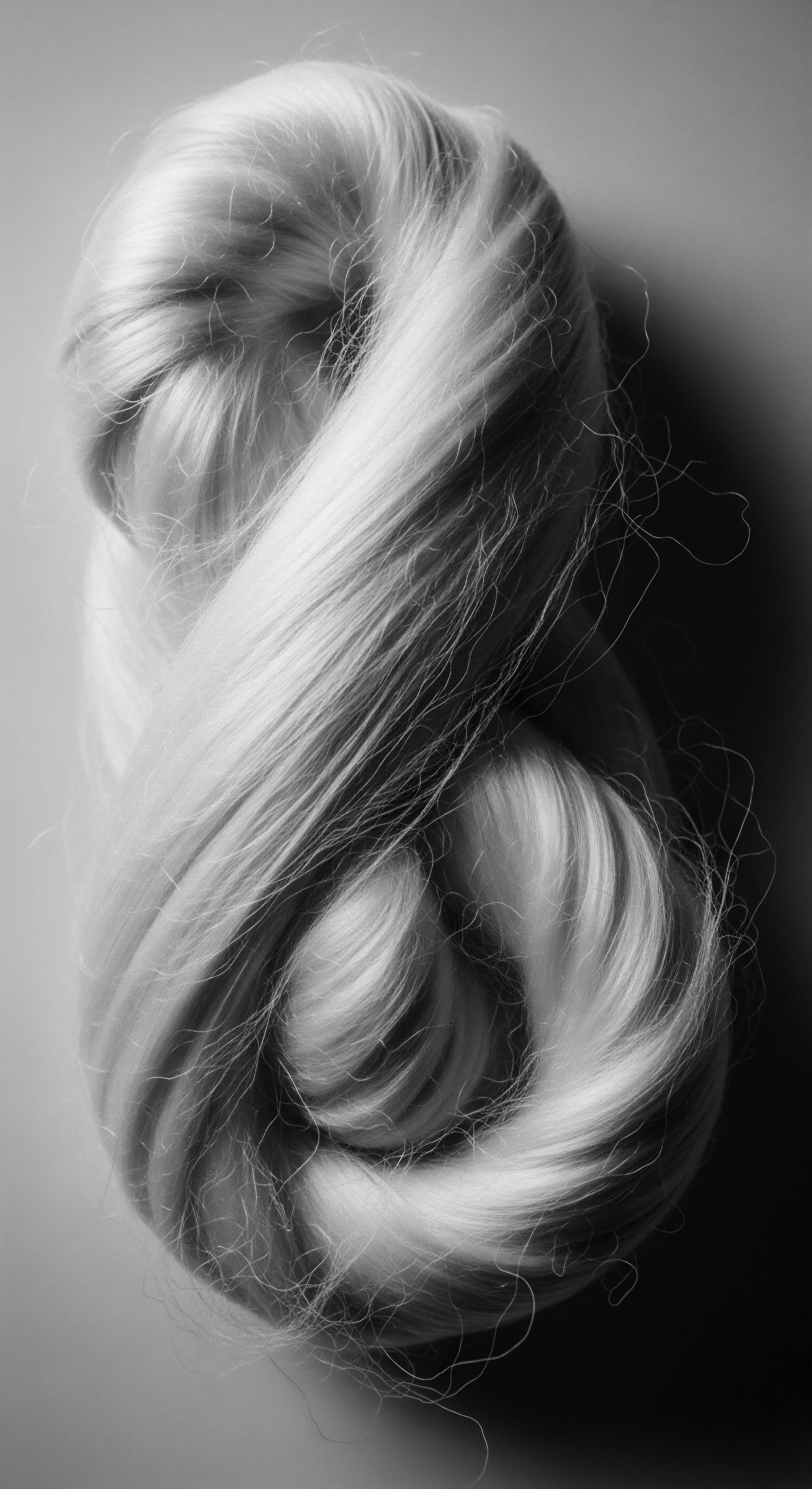
Academic
The academic definition of Genetic Hair Loss transcends a mere description of inherited thinning; it is a rigorous exploration of the intricate molecular pathways, genomic variations, and complex gene-environment interactions that collectively determine an individual’s predisposition to various forms of alopecia. For textured hair, particularly within Black and mixed-race populations, this definition gains profound depth, as the historical and socio-cultural dimensions become inextricably linked with the biological. It is an interpretation that demands a holistic lens, one that honors ancestral wisdom while scrutinizing contemporary scientific findings to reveal the full significance of this phenomenon.
At its zenith, Genetic Hair Loss refers to a hereditary susceptibility to hair follicle pathologies, wherein specific genetic loci influence the hair growth cycle, follicular morphology, and susceptibility to environmental or immunological triggers. This encompasses conditions such as androgenetic alopecia (AGA), characterized by progressive follicular miniaturization influenced by androgen sensitivity, and distinct scarring alopecias like Central Centrifugal Cicatricial Alopecia (CCCA), where genetic variants may predispose individuals to inflammatory destruction of hair follicles. The elucidation of these genetic underpinnings provides a more precise delineation of the meaning of hair loss beyond superficial observation, rooting it in the very blueprint of life.
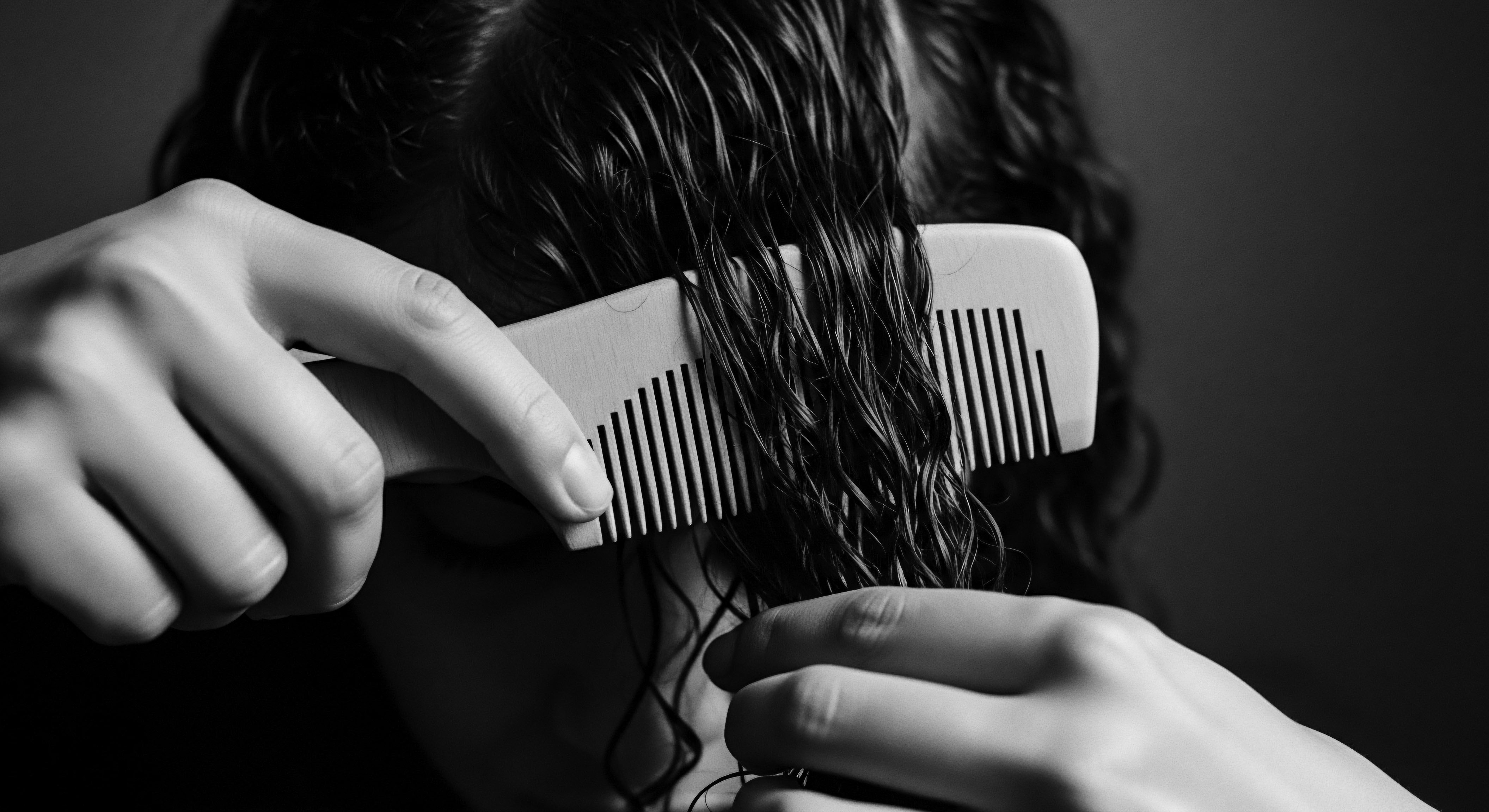
The Genomic Tapestry of Hair Follicle Vulnerability
The scientific understanding of Genetic Hair Loss rests upon the identification of specific genetic variants that influence hair follicle dynamics. In the context of androgenetic alopecia, research points to a polygenic inheritance pattern, meaning multiple genes contribute to an individual’s susceptibility. Variations in the Androgen Receptor (AR) Gene on the X chromosome are widely recognized for their influence on male pattern baldness, dictating the hair follicles’ sensitivity to dihydrotestosterone (DHT). However, recent studies highlight that the genetic architecture of AGA can vary significantly across diverse populations.
For instance, polygenic scores derived from European genome-wide association studies (GWAS) demonstrate limited predictive power for baldness patterns in sub-Saharan African men, suggesting distinct genetic influences or interactions within these populations. This observation compels a deeper inquiry into the unique genetic landscapes of textured hair, recognizing that universal models may fall short in capturing the full complexity of inherited predispositions.
Beyond AGA, the academic discourse extends to scarring alopecias, where genetic components are increasingly being identified. Central Centrifugal Cicatricial Alopecia (CCCA), disproportionately affecting women of African descent, stands as a compelling case. Historically misattributed solely to traumatic hair practices, the discovery of mutations in the PADI3 Gene has revolutionized our understanding. The PADI3 enzyme plays a vital role in modifying proteins essential for proper hair shaft formation, and its dysfunction can predispose individuals to the inflammatory and fibrotic processes characteristic of CCCA.
This genetic finding provides a powerful scientific validation for the inherited susceptibility within these communities, reframing the dialogue around culpability and offering new avenues for targeted interventions. The average age of onset for CCCA in African patients has been reported as around 40 years, which is notably lower than in other populations, hinting at potential interactions with environmental factors or earlier genetic expression.
Understanding the genetic architecture of hair loss in textured hair communities offers not only scientific clarity but also a profound affirmation of inherited experiences, guiding pathways toward more culturally resonant care.
The interplay between genetic predisposition and environmental factors is a critical area of ongoing research. While a genetic variant may predispose an individual to CCCA, environmental triggers—such as certain hair grooming practices involving heat, chemical relaxers, or excessive tension—can contribute to its clinical presentation or worsening. This gene-environment interaction is a complex dance, where inherited vulnerability meets the lived realities of hair care.

Beyond the Helix ❉ Socio-Cultural Implications and Ancestral Echoes
The academic exploration of Genetic Hair Loss in textured hair cannot be divorced from its profound socio-cultural implications. Hair, for many Black and mixed-race communities, has served as a powerful marker of identity, status, and resistance throughout history. The trauma of slavery, which often involved the forced shaving of heads and the denial of traditional hair care tools, fundamentally altered the relationship between Black individuals and their hair, creating a legacy of pressure to conform to Eurocentric beauty standards. This historical context means that hair loss, whether genetically driven or exacerbated by styling choices influenced by societal pressures, carries a deeper emotional and psychological weight.
The pursuit of “straight hair” through chemical relaxers or hot combs, though sometimes linked to conditions like CCCA, was often a means of survival, a way to navigate discriminatory societal norms that deemed natural textured hair “unprofessional” or “unattractive”. A 2023 survey revealed that Black respondents reported the most frequent use of chemical straighteners compared to other racial groups, with 61% indicating they used them because they “felt more beautiful with straight hair”. This statistic powerfully illuminates the societal pressures that have shaped hair care practices and, by extension, the manifestation of hair loss within these communities.
The emergence of research identifying genetic bases for conditions like CCCA offers a significant shift in perspective. It moves the conversation from solely focusing on individual hair practices as causative to acknowledging an underlying, inherited vulnerability. This understanding fosters a more compassionate and informed approach to care, one that recognizes the intersection of biology, history, and identity.
Academic inquiry into Genetic Hair Loss also necessitates a deep dive into ancestral practices of hair care. Before the disruptions of the transatlantic slave trade, African communities possessed rich traditions of hair cultivation, utilizing natural ingredients and methods to maintain hair health. These practices, often rooted in ethnobotany and passed down through generations, speak to an intuitive understanding of hair biology and environmental adaptation.
- Chebe Powder ❉ Hailing from Chad, this traditional blend of herbs is known for its ability to increase hair thickness and retain moisture, offering deep conditioning properties.
- Shea Butter ❉ Extracted from the nuts of the African shea tree, this natural conditioner softens and moisturizes hair, particularly beneficial for curly and coarse textures.
- Rooibos Tea ❉ Traditionally grown in South Africa, scientific studies suggest it contains antioxidants and antimicrobial effects, potentially aiding scalp health.
The modern scientific validation of some of these ancestral remedies, such as the antioxidant properties of rooibos tea or the moisturizing effects of shea butter, provides a powerful bridge between ancient wisdom and contemporary understanding. This cross-cultural dialogue enriches the academic definition of Genetic Hair Loss, placing it within a broader human narrative of resilience, adaptation, and the enduring quest for holistic well-being. The implications extend beyond diagnosis and treatment, reaching into the realm of self-acceptance and the reclamation of cultural pride in textured hair.
| Ancestral Hair Care Practice Scalp Massages with Natural Oils |
| Traditional Application & Significance Used across various African cultures to stimulate growth and nourish the scalp, often with oils like coconut or olive oil. |
| Potential Link to Genetic Hair Loss Management Improved blood circulation to follicles, potentially mitigating miniaturization in androgenetic alopecia; nourishing scalp environment for genetically predisposed follicles. |
| Ancestral Hair Care Practice Use of Chebe Powder (Chad) |
| Traditional Application & Significance Applied to hair for moisture retention and thickness, protecting strands from breakage. |
| Potential Link to Genetic Hair Loss Management May help protect fragile hair shafts in genetically susceptible individuals, reducing breakage that can exacerbate perceived thinning or contribute to traction alopecia. |
| Ancestral Hair Care Practice Herbal Rinses (e.g. Rooibos, Rosemary) |
| Traditional Application & Significance Employed for cleansing, strengthening, and promoting scalp health, often with antimicrobial or antioxidant properties. |
| Potential Link to Genetic Hair Loss Management Antioxidant and anti-inflammatory effects could support scalp health in conditions like CCCA, where inflammation plays a role, even if genetically driven. |
| Ancestral Hair Care Practice Protective Styling (e.g. Braids, Locs) |
| Traditional Application & Significance Historically used for adornment, communication of status, and minimizing manipulation, preserving hair length. |
| Potential Link to Genetic Hair Loss Management While tight styles can cause traction alopecia, properly executed protective styles can minimize external stress on genetically vulnerable follicles, promoting length retention. |
| Ancestral Hair Care Practice These intersections highlight a continuous thread of wisdom, where ancient practices, when thoughtfully applied, can complement modern understanding of inherited hair vulnerabilities. |

Reflection on the Heritage of Genetic Hair Loss
As we close this exploration of Genetic Hair Loss, particularly within the vibrant spectrum of textured hair, we find ourselves standing at a profound intersection ❉ where the whispers of ancestral lineage meet the rigorous gaze of contemporary science. It is a space where the Soul of a Strand truly comes alive, revealing not just the biological blueprint of our hair, but the indelible marks of history, resilience, and identity etched within each coil and curl. The journey of understanding inherited hair thinning is not merely about medical diagnoses; it is about honoring the stories held within our follicular memory, recognizing the challenges faced by generations past, and finding strength in shared heritage.
The knowledge that conditions like Central Centrifugal Cicatricial Alopecia (CCCA) possess a significant genetic component, as evidenced by the discovery of the PADI3 gene mutation, reshapes our understanding, moving beyond simplistic narratives of blame to a more compassionate appreciation of inherent vulnerabilities. This scientific clarity allows us to look back at the historical pressures on Black and mixed-race hair—the forced conformity, the embrace of straightening, the often-painful pursuit of acceptance—with renewed empathy. It acknowledges that the choices made were often a complex negotiation with a world that did not always celebrate the natural beauty of textured hair.
This deepened understanding of Genetic Hair Loss compels us to re-examine ancestral practices, not as quaint relics, but as living traditions imbued with wisdom. The age-old remedies, the gentle rituals, the collective care that once defined textured hair maintenance, now gain a new significance as potential complements to modern scientific approaches. They remind us that true hair wellness is holistic, embracing both the inherited predispositions and the nurturing practices that have sustained communities for centuries. The conversation around hair loss, then, transforms from one of deficit to one of legacy, inviting us to walk forward with knowledge, grace, and an unwavering reverence for the intricate, resilient heritage of every strand.
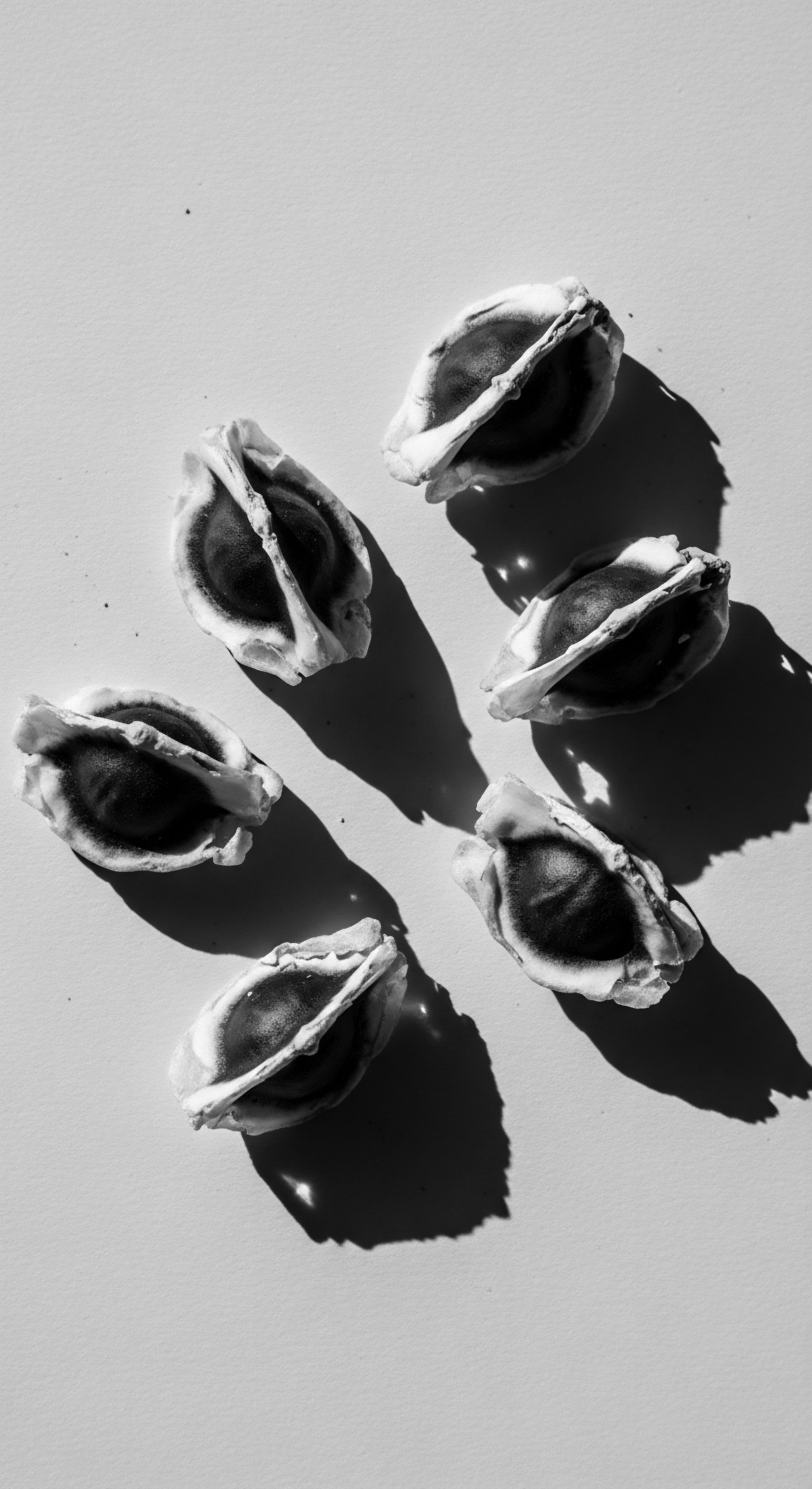
References
- Dlova, N. C. Jordaan, F. H. Sarig, O. et al. (2014). Autosomal dominant inheritance of central centrifugal cicatricial alopecia in black South Africans. Journal of the American Academy of Dermatology, 70(4), 679-682.e1.
- Malki, L. Sarig, O. Romano, M. T. et al. (2019). Variant PADI3 in Central Centrifugal Cicatricial Alopecia. The New England Journal of Medicine, 380(9), 833-841.
- McMichael, A. J. (2003). Hair and scalp disorders in women of color. Seminars in Cutaneous Medicine and Surgery, 22(2), 116-122.
- Dlova, N. C. (2019). Ground-breaking Research Gets to the Root of Permanent Hair Loss Amongst African Women. University of KwaZulu-Natal.
- Miteva, M. & Tosti, A. (2012). Frontal fibrosing alopecia in African American women. Journal of the American Academy of Dermatology, 66(6), 903-906.
- Davis, M. D. & Callender, V. D. (2018). Alopecia in women ❉ An update. American Journal of Clinical Dermatology, 19(1), 1-15.
- Aguh, C. & McMichael, A. (2021). Hair Loss in Women of Color ❉ Medical and Surgical Approaches. Springer.
- Chaplin, G. (2004). The evolution of skin pigmentation and hair texture in people of African ancestry. Evolutionary Anthropology ❉ Issues, News, and Reviews, 13(1), 38-46.
- Oka, A. Takagi, A. Komiyama, E. et al. (2020). Alopecia areata susceptibility variant in MHC region impacts expressions of genes contributing to hair keratinization and is involved in hair loss. EBioMedicine, 57, 102810.
